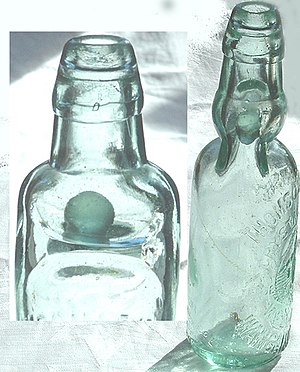plastic bottles / glass bottle / tins
Water bottles / juice bottles / running bottles / beer bottles / wine bottles
Each bottle has a diffenrt way of presenting the deisgn and ideas.
By researching the diffrent bittle possiblities it was clear to me what needed to go onto the fianl deisgsn for the hellfire bottle.
All bottles vary from each other, but beer labels and bottle have to stand out as there is such a vast range.
A bottle is a rigid container with a neck that is narrower than the body and a "mouth". By contrast, a jar or jug has a relatively large mouth or opening. Bottles are often made of glass, clay, plastic, aluminum or other impervious materials, and typically used to store liquids such as water,milk, soft drinks, beer, wine, cooking oil, medicine, shampoo, ink, and chemicals. A device applied in the bottling line to seal the mouth of a bottle is termed an external bottle cap, closure, or internal stopper. A bottle can also be sealed by a conductive "innerseal" by using induction sealing.
The bottle has developed over millennia of use, with some of the earliest examples appearing in China, Phoenicia, Rome and Crete. The Chinese used bottles to store liquids. Bottles are often recycled according to the SPI recycling code for the material. Some regions have a legally mandated deposit which is refunded after returning the bottle to the retailer.
For wine
Main article: Wine bottle
The glass bottle was an important development in the history of wine, because, when combined with a high-qualitystopper such as a cork, it allowed long-term aging of wine. Glass has all the qualities required for long-term storage. It eventually gave rise to "château bottling", the practice where an estate's wine is put in a bottle at the source, rather than by a merchant. Prior to this, wine would be sold by the barrel (and before that, the amphora) and put into bottles only at the merchant's shop, if at all. This left a large and often abused opportunity for fraud and adulteration, as the consumer had to trust the merchant as to the contents. It is thought that most wine consumed outside of wine-producing regions had been tampered with in some way. Also, not all merchants were careful to avoid oxidation or contamination while bottling, leading to large bottle variation. Particularly in the case of port, certain conscientious merchants' bottling of old ports fetch higher prices even today. To avoid these problems, most fine wine is bottled at the place of production (including all port, since 1974).
There are many sizes and shapes of bottles used for wine. Some of the known shapes:
- "Bordeaux": This bottle is roughly straight sided with a curved "shoulder" that is useful for catching sediment and is also the easiest to stack. Traditionally used in Bordeaux but now worldwide, this is probably the most common type.
- "Burgundy": Traditionally used in Burgundy, this has sides that taper down about 2/3 of the height to a short cylindrical section, and does not have a shoulder.
- "Champagne": Traditionally used for Champagne, it is similar to a Burgundy bottle, but with a wider base and heavier due to the pressurization.
[edit]Codd-neck bottles
In 1872, British soft drink maker Hiram Codd of Camberwell, London, designed and patented a bottle designed specifically for carbonateddrinks. The Codd-neck bottle was designed and manufactured to enclose a marble and a rubber washer/gasket in the neck. The bottles were filled upside down, and pressure of the gas in the bottle forced the marble against the washer, sealing in the carbonation. The bottle was pinched into a special shape, as can be seen in the photo to the left, to provide a chamber into which the marble was pushed to open the bottle. This prevented the marble from blocking the neck as the drink was poured.
Soon after its introduction, the bottle became extremely popular with the soft drink and brewing industries mainly in Europe, Asia and Australasia, though some alcohol drinkers disdained the use of the bottle. Oneetymology of the term codswallop originates from beer sold in Codd bottles, though this is generally dismissed as a folk etymology.[5]
The bottles were regularly produced for many decades, but gradually declined in usage. Since children smashed the bottles to retrieve the marbles, they are relatively rare and have become collector items; particularly in the UK. A cobalt coloured Codd bottle today fetches thousands of British pounds at auction.[citation needed] The Codd-neck design is still used for the Japanese soft drink Ramune and in theIndian drink called Banta.
[edit]Plastic bottles
Plastic bottles range from very small sample bottles to large carboys. The plastic is strain oriented in the stretch blow molding manufacturing process.
[edit]Aluminum bottles
Main article: Aluminum bottle





No comments:
Post a Comment